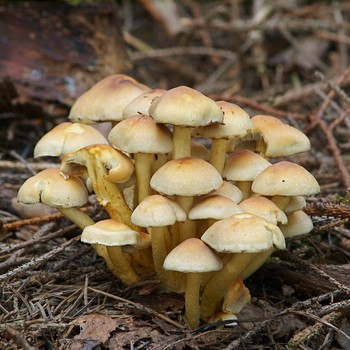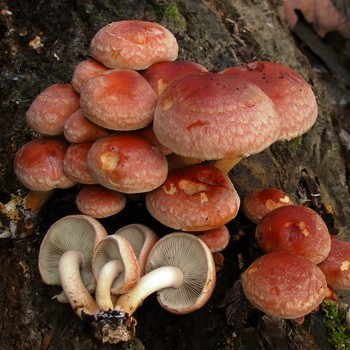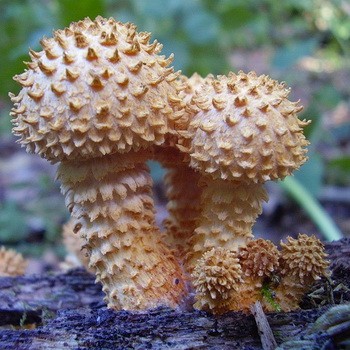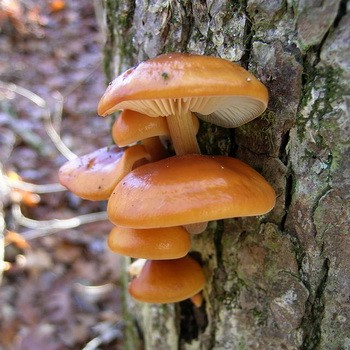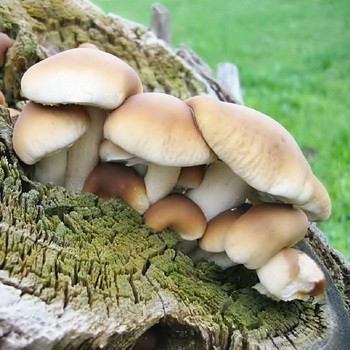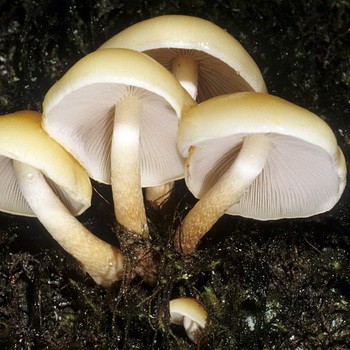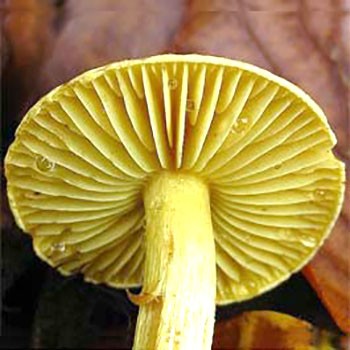Autumn mushroom mushroom and its dangerous counterparts
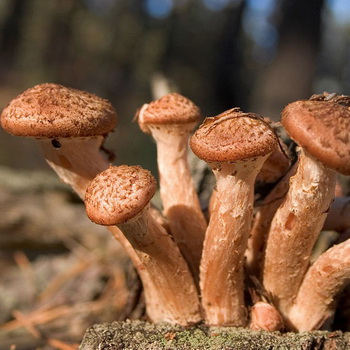
According to some external signs, edible species of honey mushrooms may resemble poisonous ones. They can be easily confused if you do not have an idea of the characteristic differences that make it possible to determine a real mushroom. However, armed with relevant information, you will make harvesting safe. So, you must remember that the autumn honey agaric also has a poisonous double. I must say that the risk of meeting such an inedible specimen in the forest is quite large. However, this does not discourage those who know how to distinguish a good edible mushroom from a poisonous relative.
All dangerous doubles of the autumn honey fly are called "false mushrooms." This is a collective phrase, because it can be attributed to several species that resemble real autumn mushrooms. You can confuse them not only by external signs, but also by the place of growth. The fact is that false honey mushrooms grow in the same places as real ones: on stumps, fallen tree trunks or branches. In addition, they bear fruit at the same time, meeting in whole groups.
We suggest you look at the photo of the autumn honeycomb and its dangerous double - false-foam of sulfur-yellow and brick-red. In addition, the above description of the above species will help you not to get lost in the forest and correctly identify the edible mushroom.
Content
Sulfur yellow poisonous double of autumn
One of the main double mushrooms of the autumn larpenis is the sulfur-yellow false-foil mushroom. This species is a dangerous "guest" for your table, as it is considered poisonous.
Latin name: Hypholoma fasciculare.
Gender: Hypholoma.
Family: Strophariaceae.
Hat: 3-7 cm in diameter, bell-shaped, which, as the fruit body grows older, becomes prostrate. The color of the double of the autumn honey agaric corresponds to the name: gray-yellow, yellow-brown. The center of the hat is darker, sometimes reddish-brown, but the edges are lighter.
Leg: flat, cylindrical, up to 10 cm high and up to 0.5 cm thick. Hollow, fibrous, light yellow.
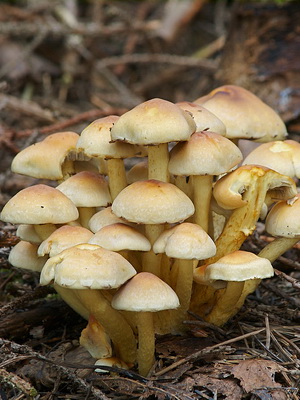
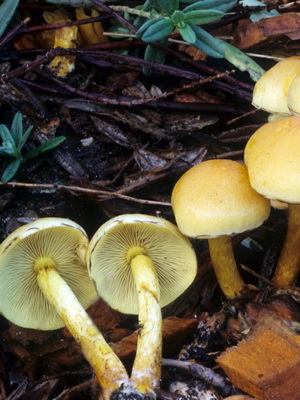
Pulp: light yellow or whitish, with a pronounced unpleasant odor and a bitter taste.
Records: thin, densely located, often adhered to the leg. At a young age, the plates are sulfur-yellow, then they acquire a greenish tint, and immediately before the death they become olive-black.
Edibility: poisonous mushroom. When eaten, it causes poisoning, up to fainting.
Spread: practically throughout the territory of the Russian Federation, except for permafrost zones. It grows in whole groups from mid-June to early October. It is found on decaying deciduous and coniferous trees. It also grows on stumps and soil near the roots of trees.
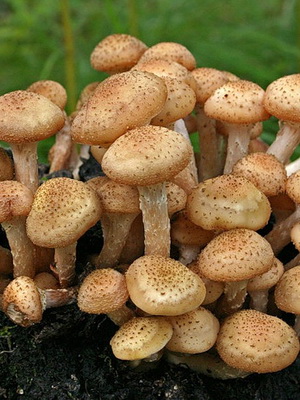
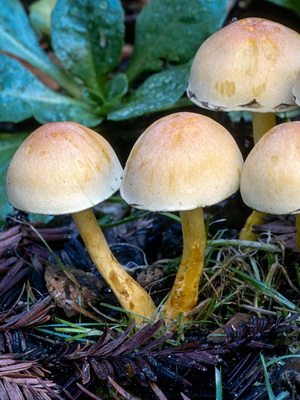
In the photo of honey agarics an autumnal and dangerous double called false-sulfur foam sulfur yellow. As you can see, the inedible mushroom has a brighter color and on its leg there is no characteristic skirt ring that all edible fruit bodies have.
Dangerous brick-red double of the autumn opening (with video)
Another representative of false species of honey mushrooms, about which edibility is still being debated.Many believe that it is poisonous, others claim the opposite. Still, going to the forest, it is necessary to remember that the honey fly in autumn and its dangerous double have a number of differences.
Latin name: Hypholoma sublateritium.
Gender: Hypholoma.
Family: Strophariaceae.
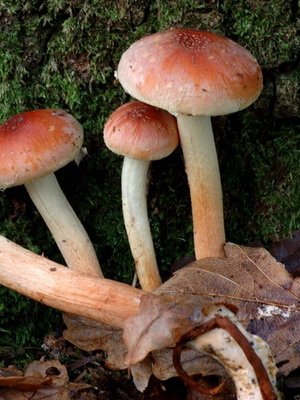
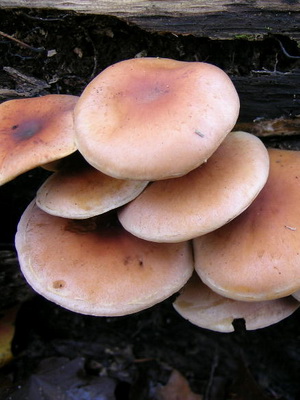
Hat: spherical, with age reveals, from 4 to 8 cm in diameter (sometimes reaches 12 cm). Thick, fleshy, red-brown, less often yellow-brown. The center of the cap is darker, and at the edges you can often notice white flakes - the remains of a private bedspread.
Leg: smooth, dense and fibrous, with time it becomes hollow and curved. Up to 10 cm in length and 1-1.5 cm in thickness. The upper part is bright yellow, the lower part is red-brown. As with other false species, the honey-red of the brick red has no skirt ring, which is the main difference between the edible fruiting body.
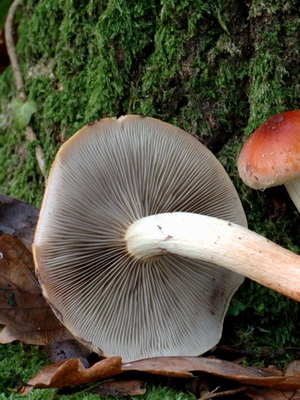
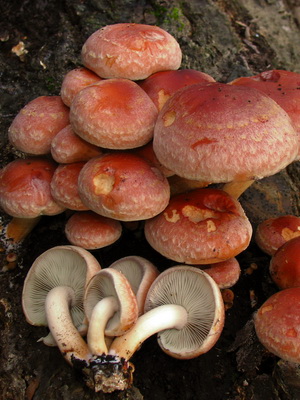
Pulp: dense, whitish or dirty yellow, bitter in taste and unpleasant in smell.
Records: frequent, narrow-growing, light gray or yellow-gray. With age, the color changes to gray-olive, sometimes with a purple tint.
Edibility: it is popularly considered a poisonous mushroom, although in most sources of mushrooms brick red is considered to be conditionally edible mushroom.
Spread: territory of Eurasia and North America. It grows on decaying stumps, branches and trunks of deciduous trees.
Watch also a video showing the autumn honey fly and its dangerous counterparts:
